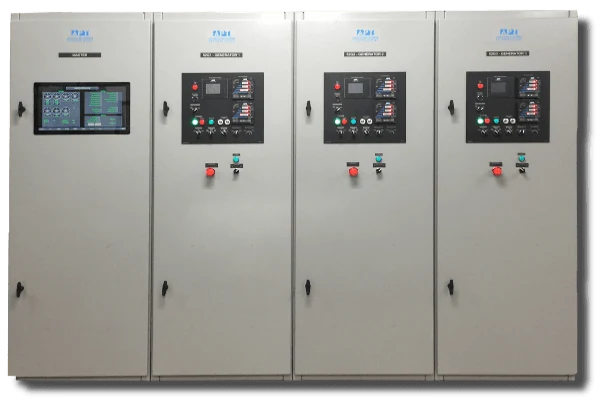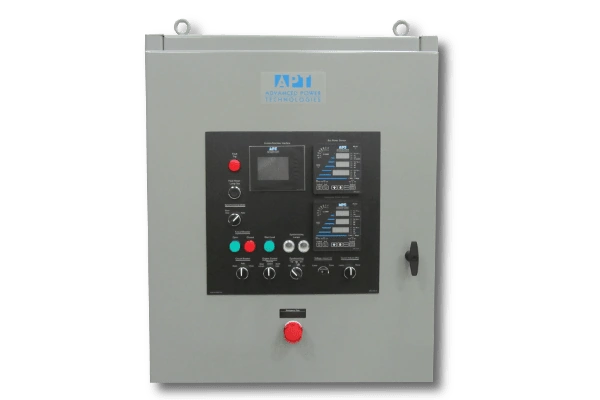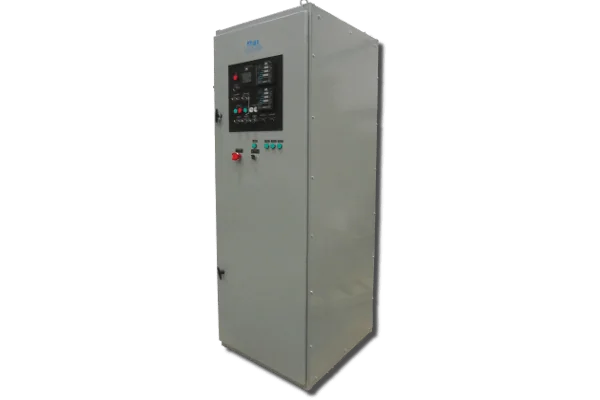APT switchgear with PG1 paralleling control system modules allow for easier maintenance. It also creates better operator experience. APT generator automatic paralleling switchgear control modules are located in a controlled environment, removed from the dangers and vibrations of rotating machines. Our generator paralleling switchgear is open architecture. In other words, it allows for use with multiple genset manufacturers. APT’s generator automatic paralleling switchgear control has greater flexibility; it has operation modes that can be achieved and future expansion capabilities.


128 samples/cycle
ANSI/IEEE C37.90.1:
Fast Transient SWC
True RMS, 3 phase
(A, V, Hz, kW, PF, kVAR, kWh, kVARh)
True RMS, 3 phase
(A, V, Hz, kW, PF, kVAR, kWh, kVARh)
Three (3) phase under/overvoltage and under/over frequency
0-10 V, +/-10 V, 4-20 mA, microprocessor controlled potentiometer
Dedicated high-brightness digital LED generator and bus metering displays visible in the
in the bright sun light or in the dark

Upon receipt of an automatic start signal initiated locally by the operator or remotely by customer’s SCADA RTU (via closure of a dry contact), the switchgear shall issue a start signal to the generator set. At this time, the switchgear shall control the generator set’s speed. Generator voltage shall be determined by the voltage adjust potentiometer. If the bus is dead and other conditions are appropriate, then the first generator to build up voltage and frequency shall close its synchronizing circuit breaker. This energizes the bus, as a result. If the load bus is already energized, then the generator set shall be automatically synchronized with the load bus under the supervision of the dedicated synchronizing check relay.
The synchronizing circuit breaker shall close once all synchronizing conditions are met. At this time, the generator set shall operate as an isochronous load sharing machine. Real load (kW) and reactive load (kVAR) shall be shared proportionally with other generator sets connected to the load bus.
Upon receipt of an automatic stop signal initiated locally by the operator or remotely by customer SCADA or DCS system (via closure of a dry contact) the switchgear shall automatically open the circuit breaker and shutdown the generator set after a cool down period.
The switchgear shall also include provisions for manual operation.
In case of bus overload, multiple stage load shed capability shall be provided. Non-critical loads feeder circuit breakers shall be tripped and/or form “C” dry type contacts. They will be provided for each stage of load shedding to disconnect non-critical loads downstream from the switchgear.
Load shed ON – OFF/RESET switch shall be provided as part of the system.
Time delays for each stage of load shed shall be adjustable through the operator interface unit mounted on the door.











We are committed to providing expert support and tailored power solutions. Contact our team today to find the right answers for your words.